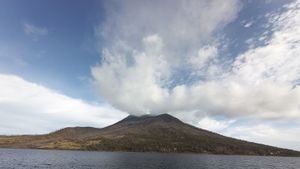
JAKARTA - Recently, PT Aneka Tambang Tbk (Antam) has received public attention for its feud with a businessman, Surabaya Budi Said. Due to the lawsuit, Antam was sentenced to pay IDR 817.4 billion or the equivalent of 1,136 kilograms or 1.1 tons of gold.
For decades of doing business in Indonesia, Antam is a state-owned gold company that has existed since the early days of the transitional government from the Old Order to the New Order (Orba) under the leadership of Suharto.
Reported by VOI from the official website of Antam, since 1968 the company has been established and designated as a State-Owned Enterprise (BUMN). Antam was founded as a merger of several national mining companies.
Then in a book entitled Tracing Back The Memory in Teluk Penyu (2011), it explains that Antam was one of the proud companies of the New Order. Antam's success is through the Cilacap Iron Sand Mining Unit (UPPB).
President Soeharto, who initially governed promoting development throughout Indonesia, saw Antam as a real contribution to shape improving social life.
UPPB Cilacap was an important project in the early days of the New Order. At that time President Soeharto visited Cilacap and directly emphasized the government's mission to develop the economy, one of which was through domestic cooperation with strategic industrial projects.
It is proven that for three decades (from 1970 to 2003) Antam has operated an iron sand mining project in Cilacap. In addition, Antam also has several company units spread across Indonesia.
In Java there are several Antam mining unions, such as the Cikotok gold mine (Banten), the Pongkor gold mine (Bogor), and the processing and refining of precious metals (Pulogadung, Jakarta). Then in Sumatra there is the Kijang bauxite mine (Bintan, Riau Islands) and the Logas gold mine (Singingi, Riau Province).
Meanwhile in Kalimantan and Sulawesi there are the Martapura diamond mines (Martapura, South Kalimantan), the Pomalaa nickel mine (North Sulawesi), the North Maluku nickel mine (East Halmahera), and the Gebe nickel mine (Central Halmahera).
At the beginning of iron mining started in 1970, the production of sand concentrate only reached 13,988 tonnes. Then after the construction of the iron sand port in Cilacap, Suharto ordered the export to Japan with a target of 300,000 each year.
On June 10, 1971, President Soeharto visited Cilacap to formalize Antam's first export to Japan. At that time, the iron sands project was considered profitable and generated foreign exchange of US $ 1.5 million.
Until the end of the fall of the New Order government, Antam was recorded as still playing a vital role in development. In order to support funding for the ferronickel expansion project, in 1997 Antam offered 35 percent of its shares to the public, aka conducting an initial public offering (IPO).
Then in 1999, Antam went international by listing its shares in Australia as a foreign exempt entity. In 2002, this status was upgraded to ASX Listing with more stringent conditions.
The English, Chinese, Japanese, Arabic, and French versions are automatically generated by the AI. So there may still be inaccuracies in translating, please always see Indonesian as our main language. (system supported by DigitalSiber.id)








